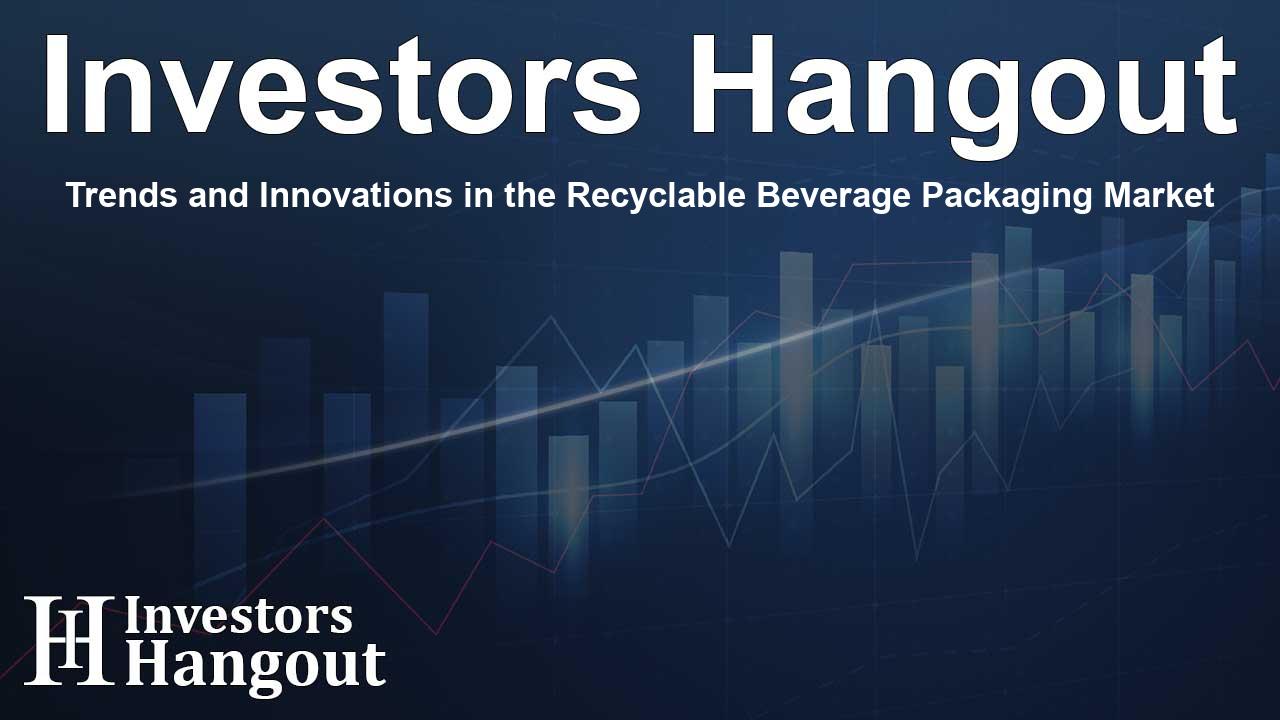Trends and Innovations in the Recyclable Beverage Packaging Market

Understanding the Growth of the Recyclable Beverage Packaging Market
The global recyclable beverage packaging market is on a remarkable growth path, propelled by a heightened consumer demand for eco-friendly products and stringent government regulations aimed at reducing plastic waste. Rising awareness around environmental issues is prompting manufacturers to embrace recyclable materials, such as glass, aluminum, and paper, while also enhancing product offerings.
Defining Recyclable Beverage Packaging
Recyclable beverage packaging encompasses materials designed for drinks that can be collected, processed, and reused to produce new products. This strategy minimizes environmental impact and aids in waste reduction. Commonly utilized materials in this domain include glass, aluminum, paperboard, and specific types of plastics like PET, selected for their recyclability and ability to preserve product freshness.
Innovations Driving Market Growth
Major beverage brands are evolving their packaging strategies by optimizing for sustainability. Innovations are pivotal to this shift, including:
- Tethered Caps: These closures remain attached to bottles, resulting in reduced litter and improved recyclability.
- Smart Caps: Integrated freshness sensors and indicators enhance product quality assurance while supporting recycling initiatives.
- Biodegradable Materials: Options such as seaweed-based or mycelium plastics are emerging as viable alternatives for compostable beverage containers.
- AI and IoT in Packaging: Intelligent systems are improving sorting processes and aiding in the creation of smart, recyclable packaging.
Market Trends to Watch
As environmental consciousness rises, several trends are shaping the recyclable beverage packaging space:
- Demand for Reusable Systems: Initiatives like deposit-return schemes are encouraging consumers to return bottles and cans, contributing to higher recycling rates.
- Corporate Social Responsibility: Beverage companies are setting ambitious sustainability goals, like incorporating recycled materials into their packaging.
- Supportive Regulations: Governments are enacting policies that promote the use of sustainable packaging, which drives innovation and adherence within the industry.
Environmental Awareness and Recycling Efforts
Increased global focus on plastic waste has led not only consumers but also companies to reevaluate how they package goods. Awareness of sustainability options pushes beverage manufacturers to adopt recyclable and reusable solutions, aligning their practices with consumer expectations and regulatory standards.
The Role of Regulations in Market Development
Governments worldwide are instigating comprehensive regulations to curb plastic waste and bolster recycling initiatives. For instance, mandates on single-use plastics and producer responsibility frameworks are compelling beverage producers to switch to recyclable packaging solutions.
Case Studies of National Initiatives
Countries are rolling out diverse measures, such as:
- Mandatory Recycling Targets: These laws oblige manufacturers to meet strict recycling quotas.
- Prohibition of Single-Use Plastics: Bans in various regions aim to transition to sustainable alternatives.
- Innovations From Industry Leaders: Companies like Coca-Cola are spearheading initiatives to transition their packaging towards recyclable forms.
Challenges Facing the Recyclable Beverage Packaging Market
While the recyclable beverage packaging market is flourishing, challenges remain. Concerns regarding performance limitations, contamination in recycling processes, and the cost associated with sustainable materials can hinder progress. The intricate logistics involved in collection and processing also present significant hurdles.
Strategies to Overcome Challenges
To tackle these challenges, businesses must innovate and collaborate with recycling facilities to enhance recyclability. Strategies such as investing in education for waste sorting among consumers can also alleviate contamination issues.
Regional Dynamics in the Recyclable Beverage Packaging Market
Different regions are witnessing varying growth rates in the recyclable beverage packaging market:
- North America: Advanced recycling systems and strong engagement in circular economy initiatives characterize this market.
- Europe: Countries like Germany and France lead the charge with advanced recycling infrastructure and robust regulations supporting sustainable packaging.
- Asia-Pacific: Rapid urbanization and government initiatives in countries such as China and India are promoting sustainable practices and packaging.
Conclusion - The Future of Recyclable Beverage Packaging
The recyclable beverage packaging market is set to thrive as manufacturers innovate toward eco-friendliness, backed by supportive regulations and an increasingly conscientious consumer base. As sustainability continues to gain ground, brands that prioritize responsible packaging will thrive in the evolving beverage landscape.
Frequently Asked Questions
What are the main materials used in recyclable beverage packaging?
The most common materials include glass, aluminum, paperboard, and specific plastics like PET, which are favored for their recyclability.
How are brands responding to consumer demand for sustainable packaging?
Brands are adopting eco-friendly practices, utilizing recyclable materials, and innovating packaging designs in response to consumer preferences.
What regulations are impacting the recyclable beverage packaging market?
Government regulations such as bans on single-use plastics and mandatory recycling targets are compelling companies to shift towards recyclable solutions.
What trends are currently shaping the market?
Key trends include the adoption of tethered caps, innovative materials, and corporate commitments to sustainability.
Why is recycling infrastructure important?
Robust recycling infrastructure is crucial to ensuring that recyclable materials are processed correctly and effectively, reducing contamination and enhancing recycling rates.
About The Author
Contact Caleb Price privately here. Or send an email with ATTN: Caleb Price as the subject to contact@investorshangout.com.
About Investors Hangout
Investors Hangout is a leading online stock forum for financial discussion and learning, offering a wide range of free tools and resources. It draws in traders of all levels, who exchange market knowledge, investigate trading tactics, and keep an eye on industry developments in real time. Featuring financial articles, stock message boards, quotes, charts, company profiles, and live news updates. Through cooperative learning and a wealth of informational resources, it helps users from novices creating their first portfolios to experts honing their techniques. Join Investors Hangout today: https://investorshangout.com/
The content of this article is based on factual, publicly available information and does not represent legal, financial, or investment advice. Investors Hangout does not offer financial advice, and the author is not a licensed financial advisor. Consult a qualified advisor before making any financial or investment decisions based on this article. This article should not be considered advice to purchase, sell, or hold any securities or other investments. If any of the material provided here is inaccurate, please contact us for corrections.
